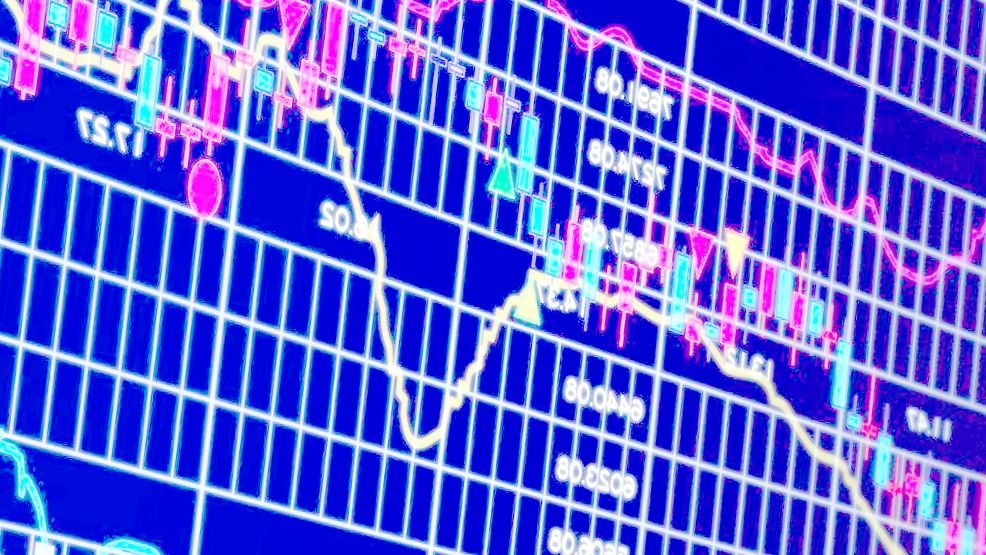Contents
This is one of the simplest automated trading strategies and it is widely used by many investors. Cross-sectional momentum compares the momentum metrics across different stocks to try to predict the future returns of one or more of them. Even if two stocks such as Facebook and Google are indicating a momentum breakout, this may be driven by the market, but you try to beat the market by taking stronger momentum between those signals. This tends to be more computationally heavy, since you need to calculate the metrics with potentially tens to hundreds of time-series. When we started thinking about a trading API service earlier this year, we were looking at only a small segment of algo trading. However, the more users we talked with, the more we realized there are many use cases for automated trading, particularly when considering different time horizons, tools, and objectives.
So, instead of trying to make that algorithm have a 100% wind rate which is impossible. We create other algorithms to cover these other market conditions. Okay, so now I’ll start talking about our design methodology.
This procedure allows for profit for so long as price moves are less than this spread and normally involves establishing and liquidating a position quickly, usually within minutes or less. Computerization of the order flow in financial markets began in the early 1970s, when the New York Stock Exchange introduced the “designated https://traderevolution.net/ order turnaround” system . SuperDOT was introduced in 1984 as an upgraded version of DOT. Both systems allowed for the routing of orders electronically to the proper trading post. The “opening automated reporting system” aided the specialist in determining the market clearing opening price (SOR; Smart Order Routing).
Futures markets are considered fairly easy to integrate into algorithmic trading, with about 20% of options volume expected to be computer-generated by 2010. Bond markets are moving toward more access to algorithmic traders. Examples of strategies used in algorithmic trading include systematic trading, market making, inter-market spreading, arbitrage, or pure speculation, such as trend following. Many fall into the category of high-frequency trading , which is characterized by high turnover and high order-to-trade ratios.
You can learn more about the standards we follow in producing accurate, unbiased content in oureditorial policy. If the orders are executed as desired, the arbitrage profit will follow. Order-placing capability that can route the order to the correct exchange. Network connectivity and access to trading platforms to place orders. Thomas J Catalano is a CFP and Registered Investment Adviser with the state of South Carolina, where he launched his own financial advisory firm in 2018. Thomas’ experience gives him expertise in a variety of areas including investments, retirement, insurance, and financial planning.
What is Algorithmic Trading?
We chose to do it on a monthly basis because we felt that that would give enough room to see how the strategy trades throughout that period. So again, we define the market states into three categories. When this happens, or to be more technical before this happens, an algorithm is able to exploit the anticipated trades to make a profit. As of 2009, HFT, which comprises a broad set of buy-side as well as market making sell side traders, has become more prominent and controversial.
These algorithms or techniques are commonly given names such as “Stealth” , “Iceberg”, “Dagger”, ” Monkey”, “Guerrilla”, “Sniper”, “BASOR” and “Sniffer”. Dark pools are alternative trading systems that are private in nature—and thus do not interact with public order flow—and seek instead to provide undisplayed liquidity to large blocks of securities. In dark pools, trading takes place anonymously, with most orders hidden or “iceberged”. Gamers or “sharks” sniff out large orders by “pinging” small market orders to buy and sell. When several small orders are filled the sharks may have discovered the presence of a large iceberged order. Most strategies referred to as algorithmic trading (as well as algorithmic liquidity-seeking) fall into the cost-reduction category.
This is what we call our hero algorithm for the condition where the market is going higher. Now, I’m going to quickly go over the other ones. But the iron condor also does really well when the market goes higher. It’s selling a call and selling a put at the same time.

Autotrading is a trading plan based on buy and sell orders that are automatically placed based on an underlying system or program. Quantitative trading consists of trading strategies that rely on mathematical computations and number-crunching to identify trading opportunities. Read the incoming price feed of RDS stock from both exchanges. Due to the one-hour time difference, AEX opens an hour earlier than LSE followed by both exchanges trading simultaneously for the next few hours and then trading only in LSE during the last hour as AEX closes. Access to market data feeds that will be monitored by the algorithm for opportunities to place orders. Algorithmic trading provides a more systematic approach to active trading than methods based on trader intuition or instinct.
Percentage of Volume (POV)
We haven’t always had the independent third party review. But what we do think we have is a really good suite of algorithms. So the purpose of this video is to give everyone a real high level view of what our trading design methodology is. How do we try to out perform it and provide value?

Scanning the many orders coming into the market. We are looking for patterns to see if someone is trying to buy or sell a large quantity of Apple stock. HFT funds spend hundreds of millions on hardware and software infrastructure to reduce their computing and communication speed by the milliseconds. Thus, many new innovative strategies are created everyday and are not known to the general public.
Identifying Your Own Personal Preferences for Trading
But that’s kind of our case study for S&P Crusher. Where we use this kind of market direction agnostic design methodology. So put together a portfolio that we have high expectations for moving forward. Alright, so the first step in implementing our trading methodology or design methodology is to define market states.
Frequency – The higher the frequency of the data, the greater the costs and storage requirements. For low-frequency strategies, daily data is often sufficient. For high frequency strategies, it might be necessary to obtain tick-level data and even historical copies of particular trading exchange order book data. Implementing a storage engine for this type of data is very technologically intensive and only suitable for those with a strong programming/technical background. This data is often used to value companies or other assets on a fundamental basis, i.e. via some means of expected future cash flows.
- We like to focus on the ones with the most volume.
- Those really have the most volume and so we stick to those.
- The first step is to decide on the strategy paradigm.
R is excellent for dealing with huge amounts of data and has a high computation power as well. Thus, making systems development life cycle it one of the better tools for backtesting. We can use MATLAB as well but it comes with a licensing cost.
Create and test your own trading algo
The next step is to perform optimization to get the most optimal results. The second stage of market timing is forward testing, and it involves running the algorithms through sample data to ensure it performs within the backtested expectations. Arbitrage is only possible with securities and financial products trading electronically. Also, the transactions should occur simultaneously to minimize the exposure to market risk or the probability that the price of one market may change before both transactions are complete. Going by the number of courses available online on algorithmic trading, there are several on display, but finding the apt one for your individual requirement is most important.
Does it mean we will be profitable running those strategies?
You may doubt it, but some research indicates that this works in the real world, especially long-term. The logic behind it is that price fluctuates many times, and you may buy the stock cheaper overall compared to just investing in the stock at one point in time. Volatility – Volatility is related strongly to the “risk” of the strategy.
If you want to enhance your knowledge of quantitative trading, we recommend you read Algorithmic Trading Winning Strategies and Their Rationale by Ernest P. Chan. Ernest wrote one of the best algorithmic trading strategies books. What sets this insightful book apart from others is the emphasis on real-world examples as opposed to just theory. Do you work from home or have a long commute each day?
Step 3: Combine Algorithmic Trading Strategies into Final Trading System
The offers that appear in this table are from partnerships from which Investopedia receives compensation. This compensation may impact how and where listings appear. Investopedia does not include all offers available in the marketplace. Investopedia requires writers to use primary sources to support their work. These include white papers, government data, original reporting, and interviews with industry experts. We also reference original research from other reputable publishers where appropriate.
Thus certain consistent behaviours can be exploited with those who are more nimble. For instance, large funds are subject to capacity constraints due to their size. Thus if they need to rapidly offload a quantity of securities, they will have to stagger it in order to avoid “moving the market”. Sophisticated algorithms can take advantage of this, and other idiosyncrasies, in a general process known as fund structure arbitrage.
This often hedges market risk from adverse market movements i.e. makes the strategy beta neutral. First of all, you should know how to detect price momentum or trends. As you are already into trading, you know that trends can be detected by following stocks and ETFs that have been continuously going up for days, weeks or even several months in a row.
You know, just another way of looking at the same data. So when the markets going higher, the iron lexatrade broker review condor contributes a lot. When the market goes sideways, you can see the iron condor also helps.
Market timing algorithms will typically use technical indicators such as moving averages but can also include pattern recognition logic implemented using finite-state machines. The rise of high-frequency trading robots has led to a cyber battle that is being waged on the financial markets. Forex algorithmic trading strategies have also brought to life several other trading opportunities that an astute trader can take advantage of. Developing your algorithmic trading strategy takes time, but the advantages and the peace of mind you get makes it worth it.
